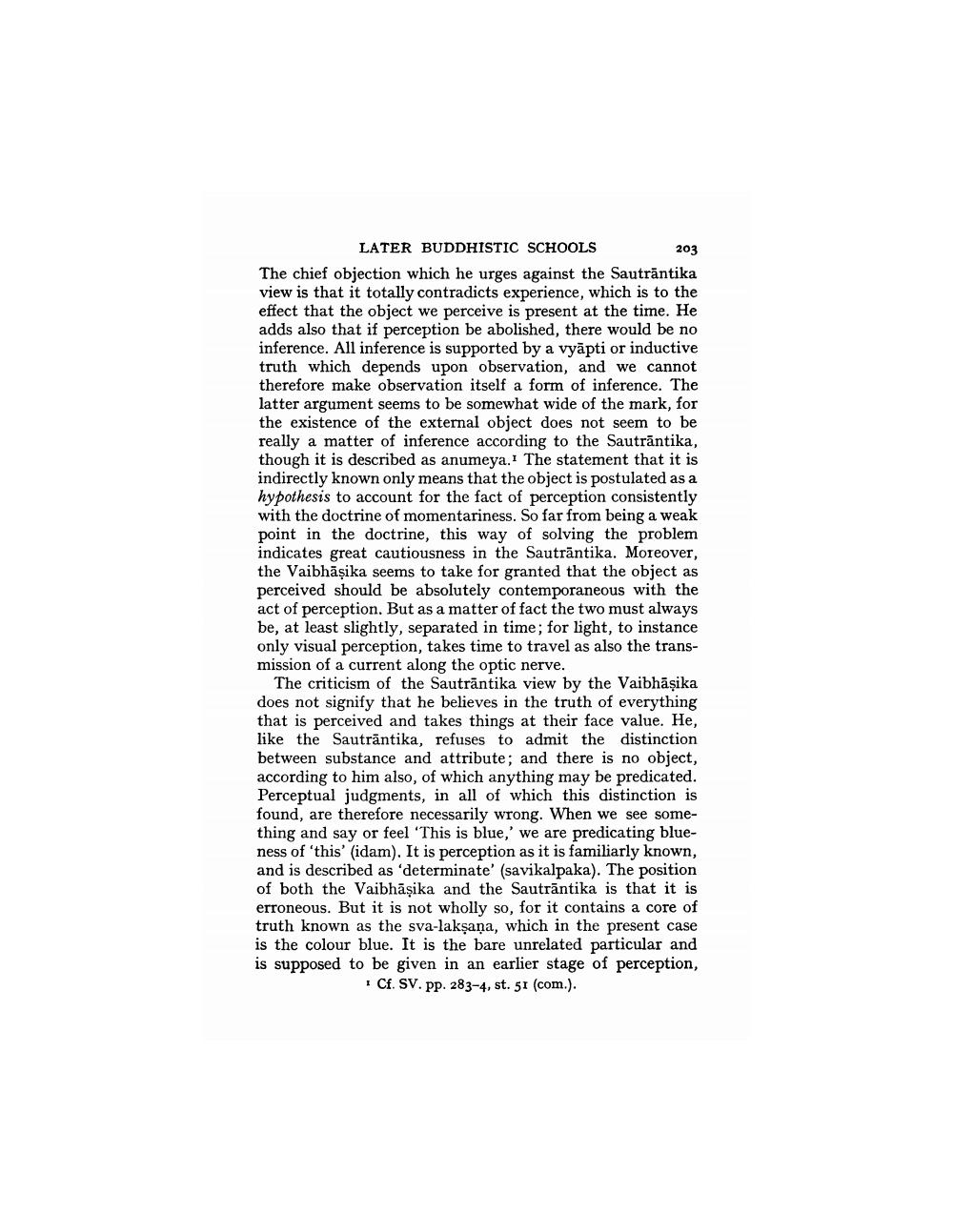________________
LATER BUDDHISTIC SCHOOLS
203 The chief objection which he urges against the Sautrāntika view is that it totally contradicts experience, which is to the effect that the object we perceive is present at the time. He adds also that if perception be abolished, there would be no inference. All inference is supported by a vyāpti or inductive truth which depends upon observation, and we cannot therefore make observation itself a form of inference. The latter argument seems to be somewhat wide of the mark, for the existence of the external object does not seem to be really a matter of inference according to the Sautrāntika, though it is described as anumeya. The statement that it is indirectly known only means that the object is postulated as a hypothesis to account for the fact of perception consistently with the doctrine of momentariness. So far from being a weak point in the doctrine, this way of solving the problem indicates great cautiousness in the Sautrāntika. Moreover, the Vaibhāşika seems to take for granted that the object as perceived should be absolutely contemporaneous with the act of perception. But as a matter of fact the two must always be, at least slightly, separated in time; for light, to instance only visual perception, takes time to travel as also the transmission of a current along the optic nerve.
The criticism of the Sautrāntika view by the Vaibhāşika does not signify that he believes in the truth of everything that is perceived and takes things at their face value. He, like the Sautrāntika, refuses to admit the distinction between substance and attribute; and there is no object, according to him also, of which anything may be predicated. Perceptual judgments, in all of which this distinction is found, are therefore necessarily wrong. When we see something and say or feel 'This is blue,' we are predicating blueness of 'this' (idam). It is perception as it is familiarly known, and is described as 'determinate' (savikalpaka). The position of both the Vaibhāṣika and the Sautrāntika is that it is erroneous. But it is not wholly so, for it contains a core of truth known as the sva-lakşaņa, which in the present case is the colour blue. It is the bare unrelated particular and is supposed to be given in an earlier stage of perception,
Cf. SV. pp. 283-4, st. 51 (com.).




